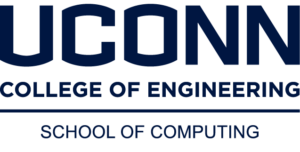Computer Engineering
Program Description
This program produces graduates with skills in designing computer hardware and peripherals, and emphasizes the electrical characteristics of the computer itself. It is focused primarily on designing the computer hardware, associated core software structures and their interfaces.·Focus areas include real-time computing systems, communication and computing networks, and VLSI design/fabrication. Students in the program get a strong grounding in both computer science and electrical engineering.
This program leads to a Bachelor of Science in Engineering (BSE), and requires a minimum of 126 credits. See also, the ABET Computer Engineering Program Objectives, Student Outcomes & Population Data.
The program is jointly administered by the Computer Science and Engineering and Electrical and Computer Engineering Departments. Further information is here.
Computer Engineering Degree Curriculum
